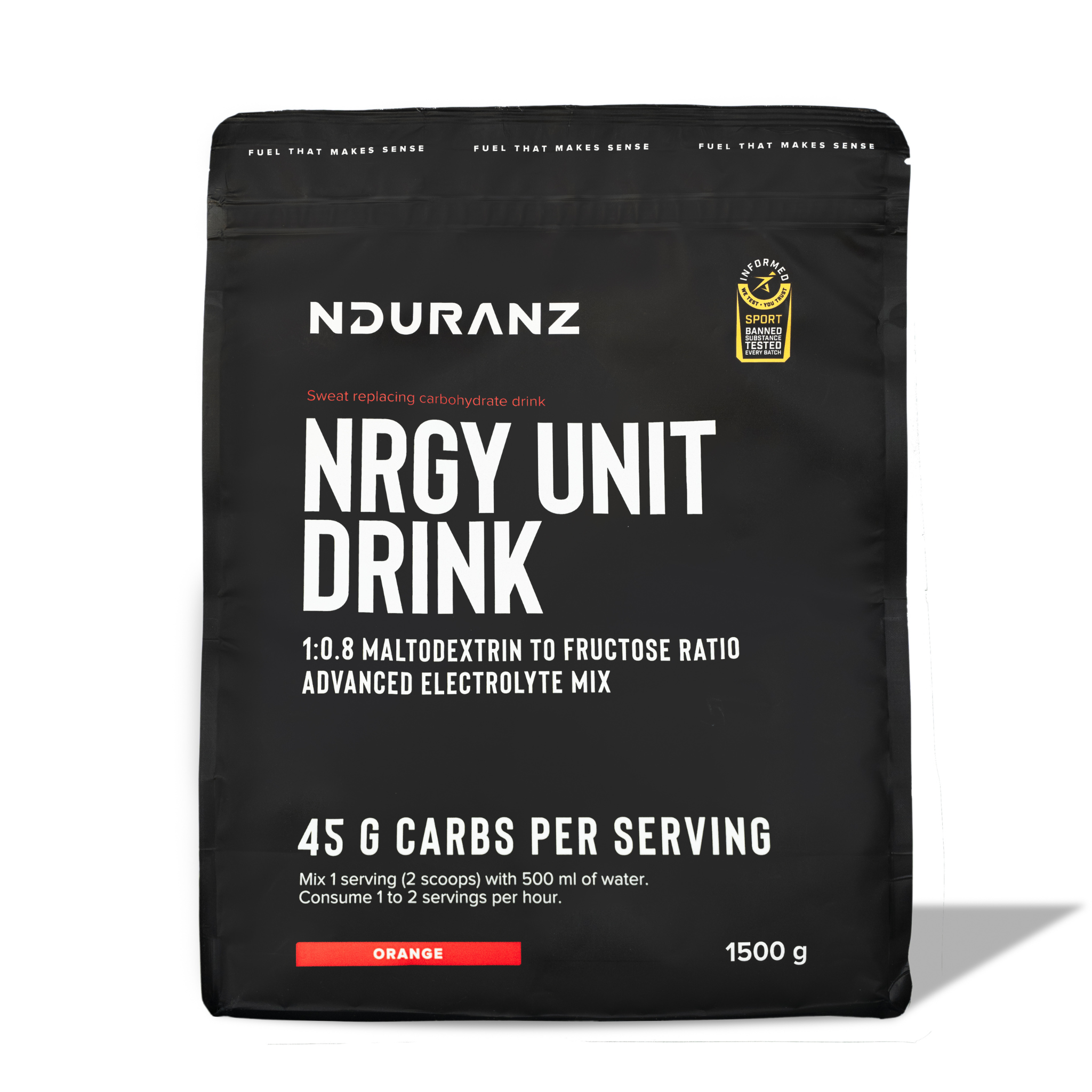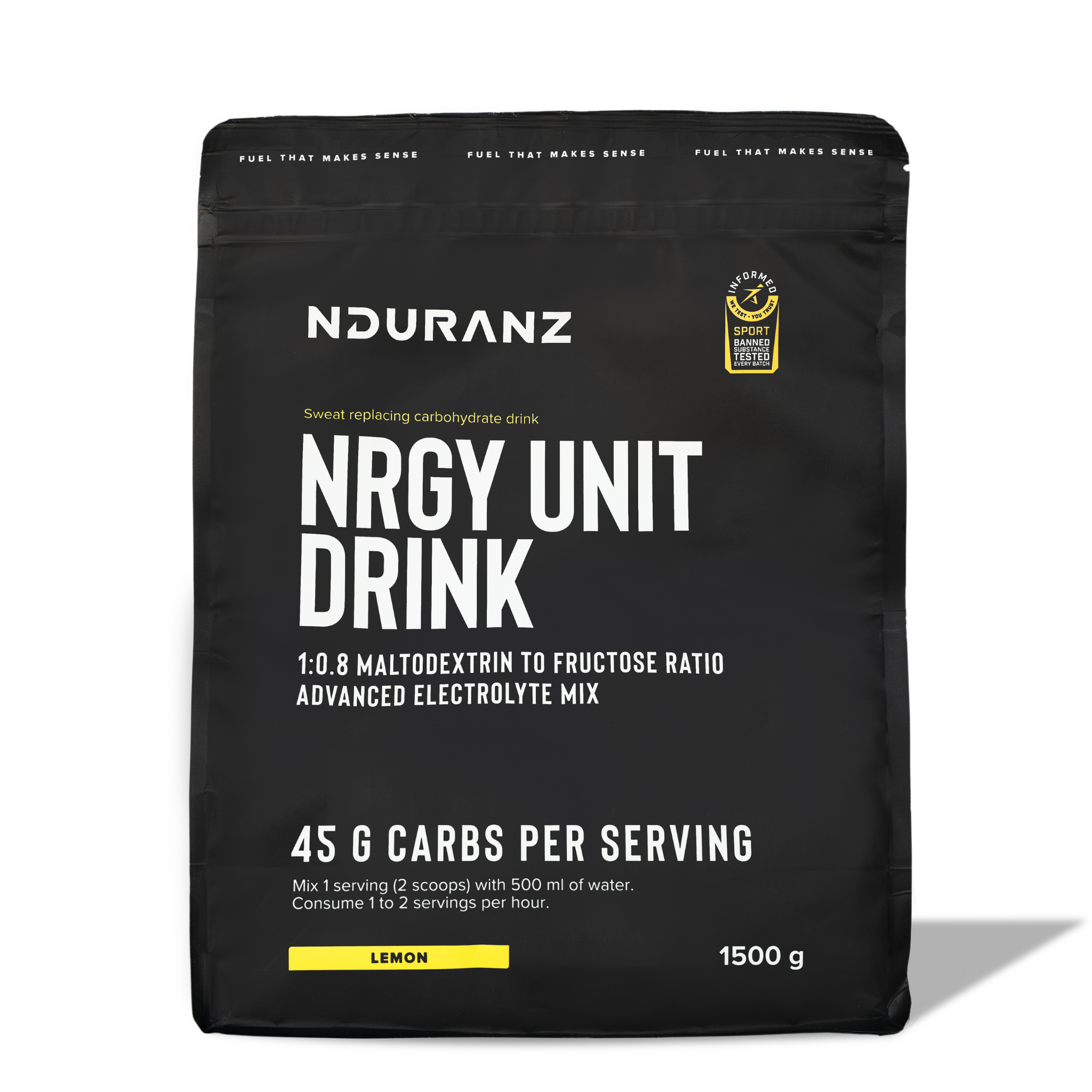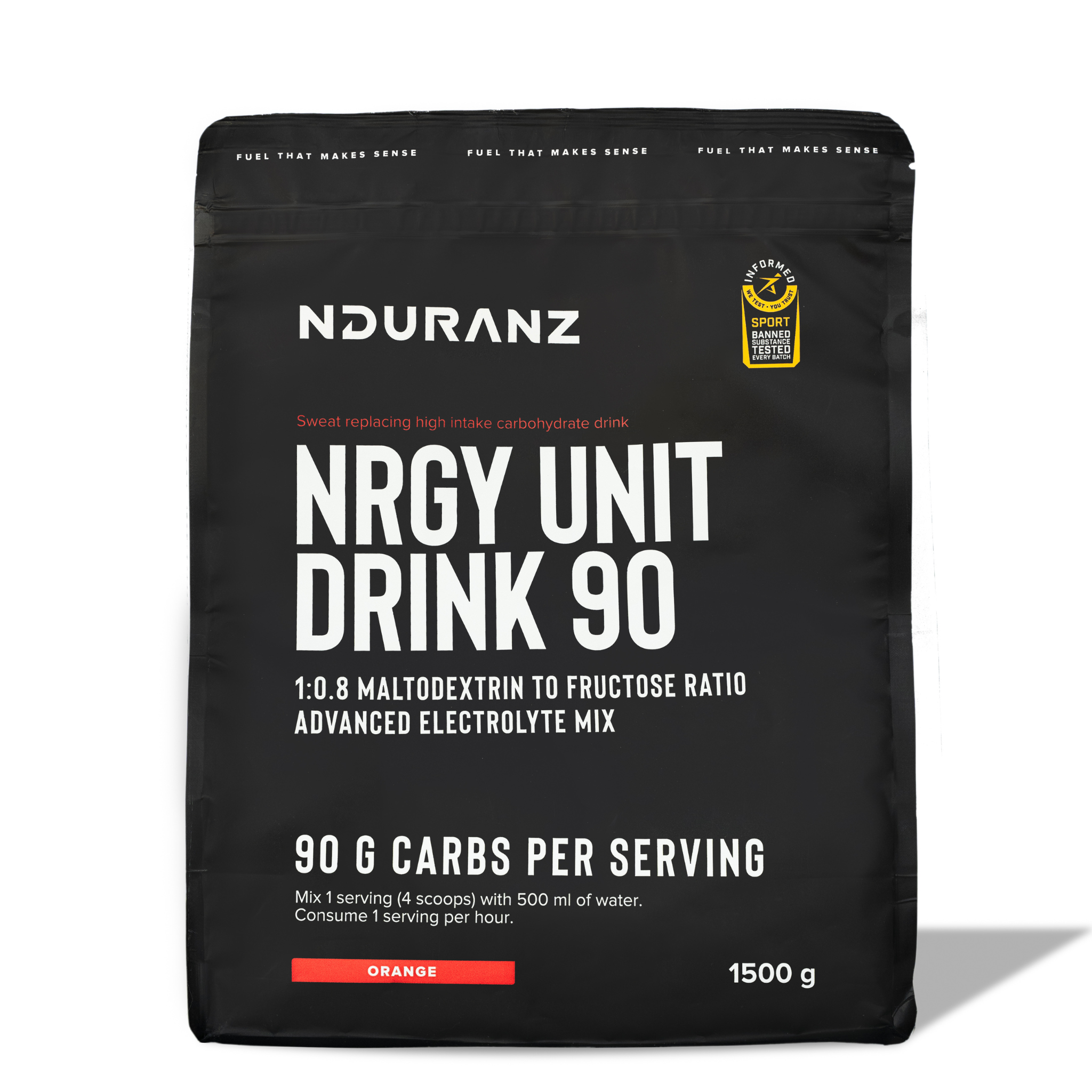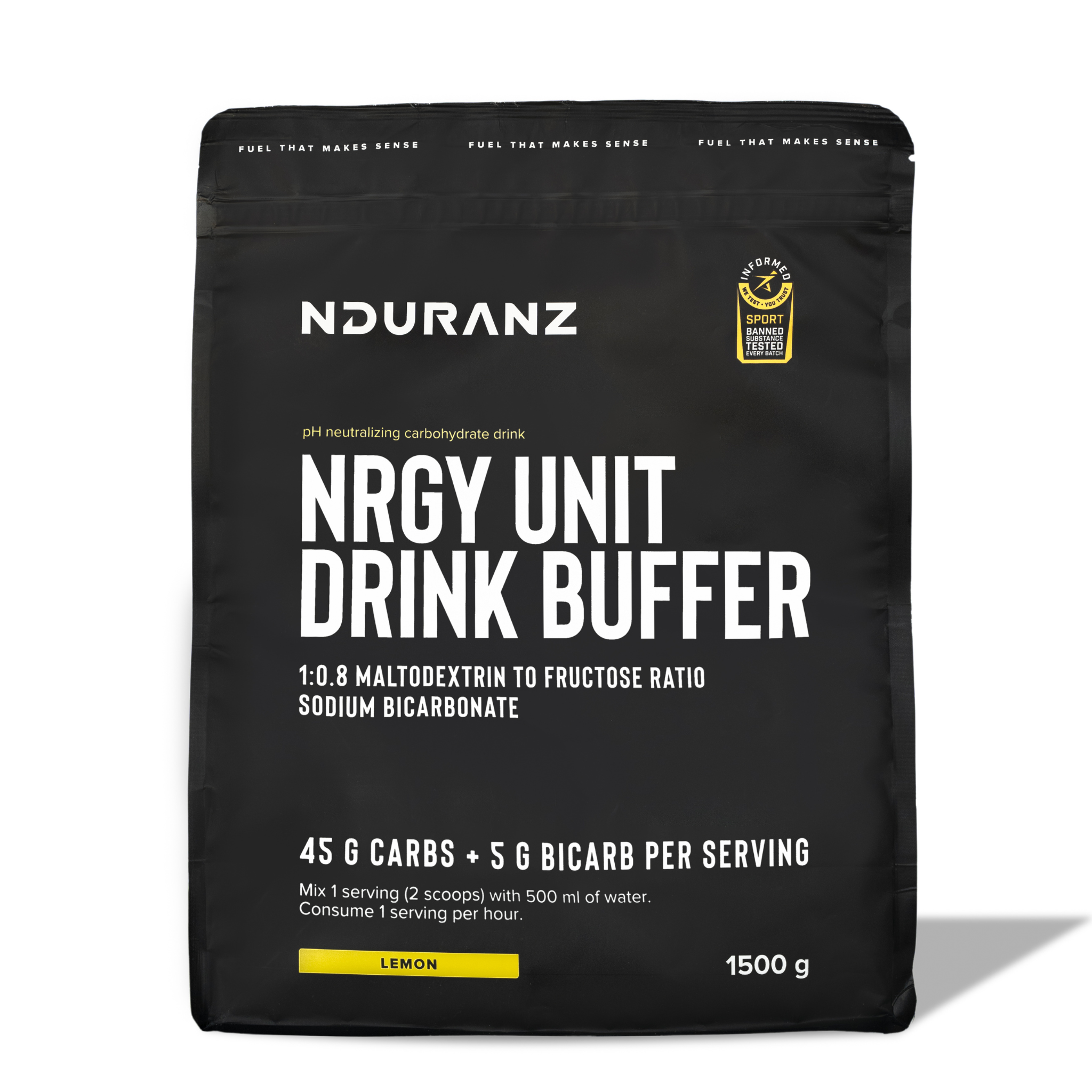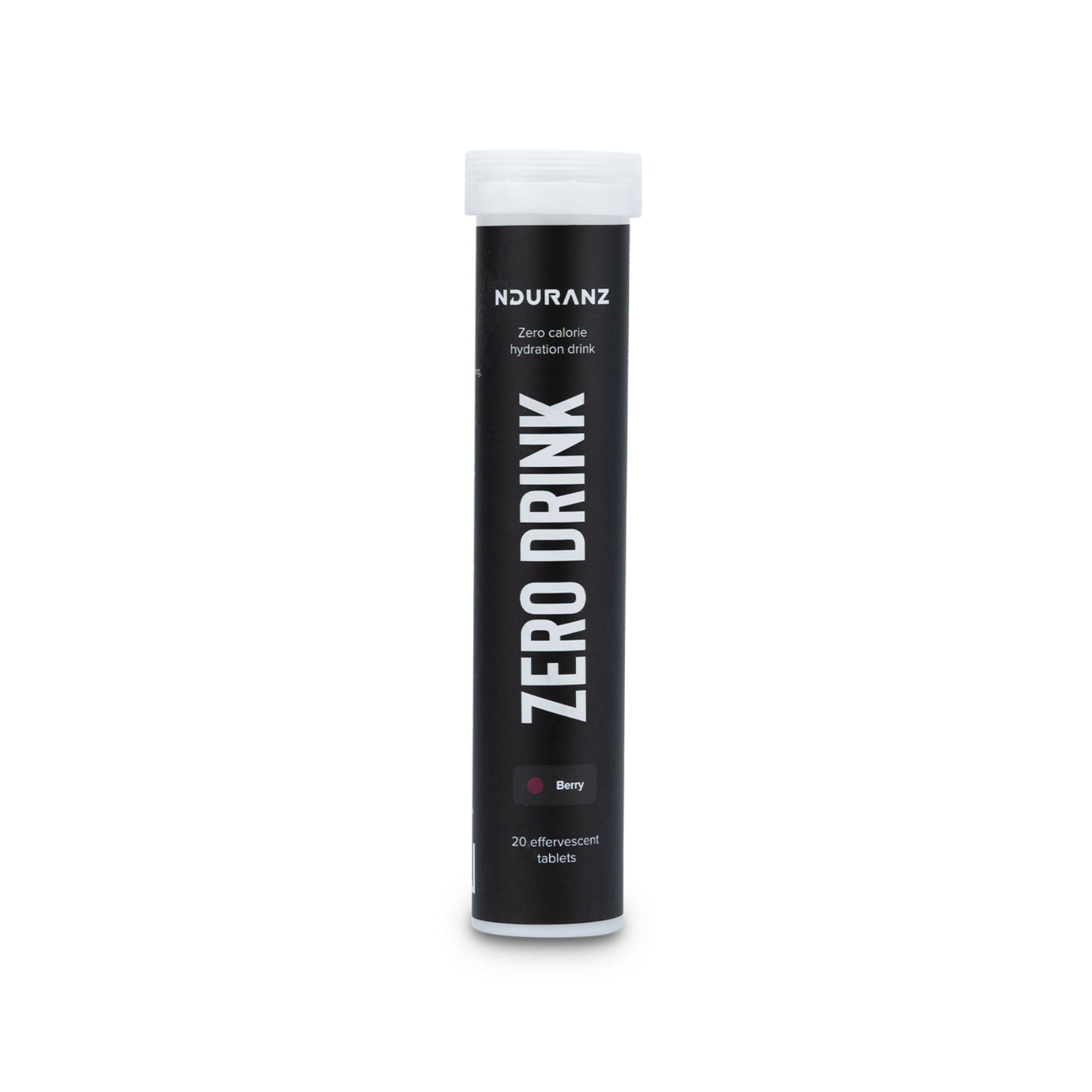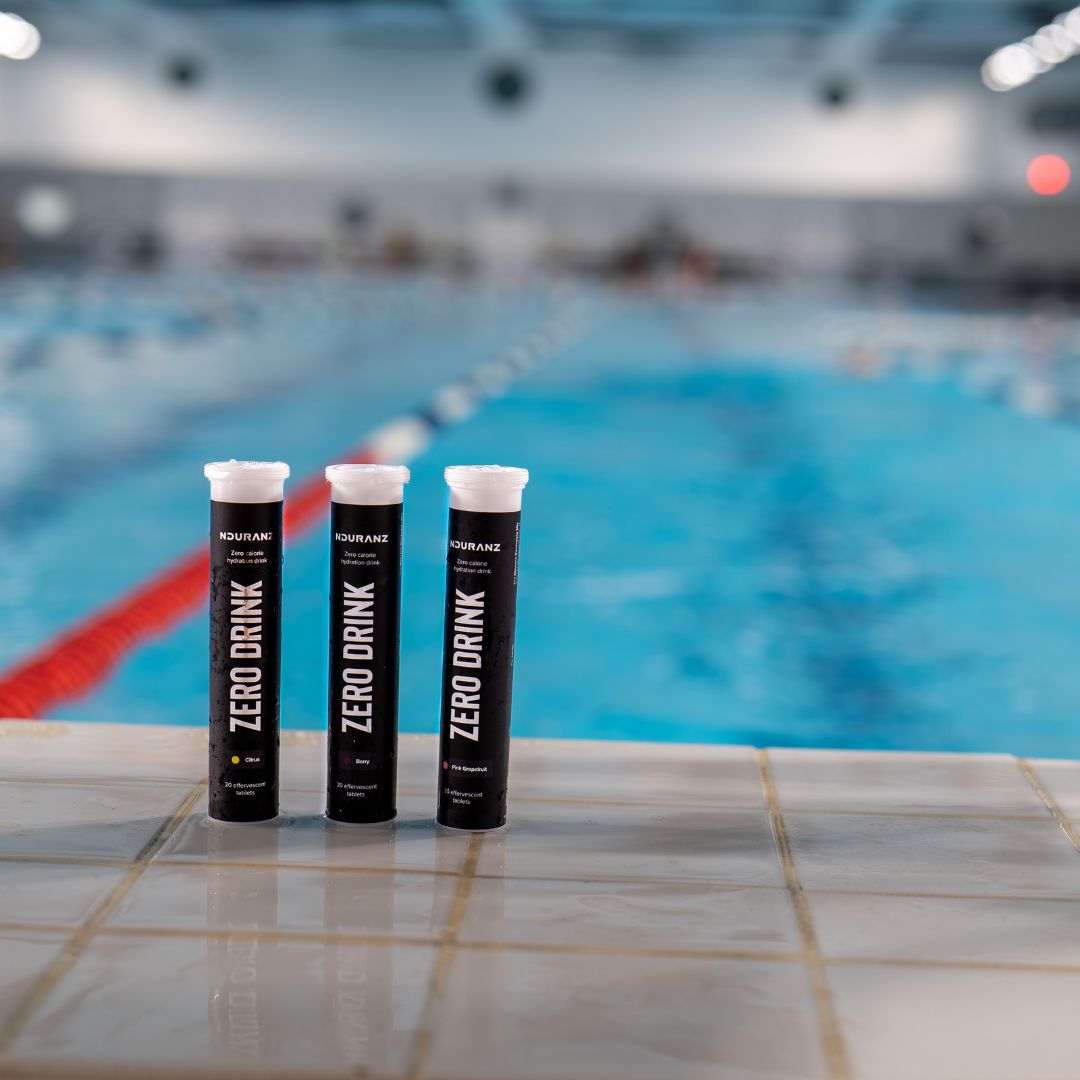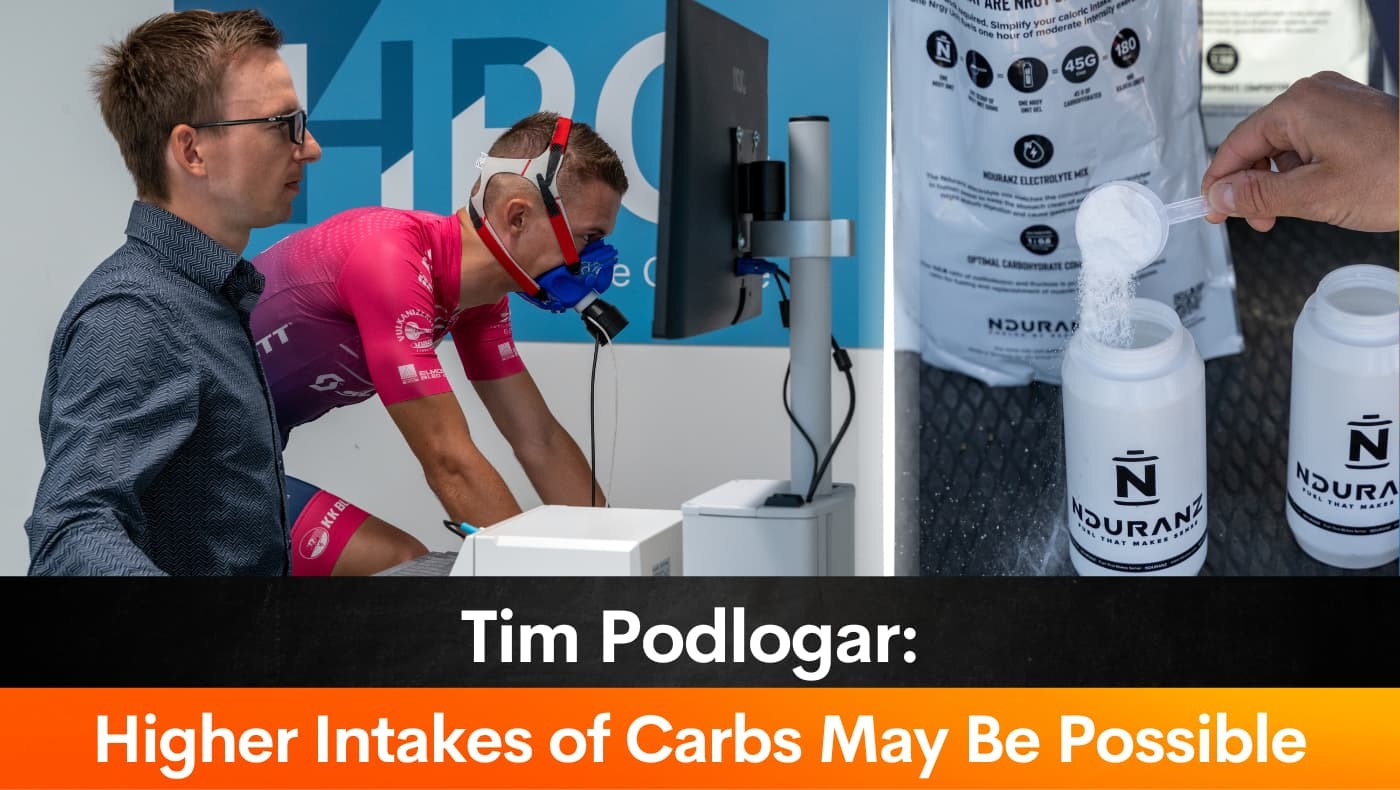The recommended intake of carbohydrates during intense endurance exercise is 90 grams per hour. That's a lot of carbs. And yet, professional athletes are pushing the boundaries of sports nutrition by testing even higher intakes.
But does that make sense? Can an athlete really absorb more than 90 grams of carbs per hour?
Dr. Tim Podlogar in collaboration with the Human Performance Centre set out to answer this question.
The recommended carbohydrate intake
The old guidelines for carbohydrate intake during intense endurance exercise that lasts 2 hours or more recommend an intake from 60 to 90 grams of carbohydrates per hour.
This is based on the limitations of the most important carbohydrates transporters in the small intestines (SGLT1 and GLUT5), which are responsible to carry glucose and fructose, respectively, from your digestive tract to your muscles.
Due to the ability of these two transporters to function alongside each other, scientists concluded that a combination of glucose and fructose is best to achieve high absorption of carbs during exercise. And in terms of the ratio between these two simple sugars, 1:0.8 is considered best. Learn more about the Nduranz Carbohydrate Ratio.
'According to these guidelines, consuming more than 90 grams is not efficient,' explains Dr. Tim Podlogar. 'But lately, the idea is growing that an intake of 120 grams or more might be better, especially for well-trained athletes. In theory, this would allow them to absorb and use more carbohydrates.'
'Most professional teams are already consuming 120 grams of carbohydrates per hour on hard days.' - Dr. Tim Podlogar
Comparing 90 and 120 grams of carbohydrates per hour
Dr. Tim Podlogar and his research team wanted to test in practice the intake of 90 grams compared to 120 grams of carbohydrates per hour.
They had two hypotheses.
- An intake of 120 grams of carbohydrates per hour will allow you to use more carbohydrates. This means you will be able to eat, absorb, and use more energy.
- Consuming more carbohydrates will slow down glycogen breakdown, i.e. the carbohydrates stored in your body. This should lead to an increase in endurance during longer exercise, as you will retain more energy in your body.
They carried out the study by recruiting well-trained individuals. Their average power in watts during 3 hours of cycling in the study was comparable to what professional cyclists are averaging in races at around 265 W.
The goal was to determine the quantity of carbohydrates they were actually able to oxidize and what was going on with the total carbohydrate and fat oxidation.
'We determined that you can in fact use more than 90 grams of carbohydrates per hour,' explains Dr. Tim Podlogar. 'Unfortunately, we couldn't confirm that this leads to glycogen sparing. This means that in the end, you'll use the same amount of glycogen whether you consume 90 or 120 grams per hour. We speculate that the reason is that consuming more carbohydrates doesn't slow down glycogen use but only slows down fat use.'
'Consuming 120 grams of carbohydrates per hour did not result in an improvement over 90 grams of carbohydrates per hour.' - Dr. Tim Podlogar
Testing different ratios
The team tested two different carbohydrate ratios in their study.
- For 90 grams of carbohydrates per hour, they used the 2:1 ratio between glucose and fructose.
- For 120 grams of carbohydrates per hour, they used the 1:0.8 ratio between glucose and fructose.
'We used two different ratios because glucose absorption is supposed to be limited to 60 or 66 grams per hour. For this reason, using the 2:1 ratio at 120 grams per hour would exceed this natural limit and the glucose could not be absorbed,' elaborates Dr. Tim Podlogar. 'The higher the intake of carbohydrates, the more we are forced to gravitate towards the 1:1 ratio between glucose and fructose, in my opinion.'
'According to research and my experience, 1:0.8 remains the best ratio between glucose and fructose.' - Dr. Tim Podlogar
Does it make sense to consume more than 90 grams of carbohydrates per hour?
'Unless you are an elite athlete functioning at the highest possible level, 90 grams of carbohydrates per hour is more than enough,' answers Dr. Tim Podlogar. 'Personally, that's the intake I'll be sticking to. There's no point going beyond.'
But what's the benefit for an elite athlete?
'It comes down to running beyond emptying your glycogen stores. Once they are fully depleted, being able to absorb and use 120 grams of carbohydrates per hour instead of 90 grams could result in improved athletic performance,' speculates Dr. Tim Podlogar. 'Further research is definitely needed to support this claim, but I doubt it would make a huge difference.'
Conclusion
The established guidelines recommend an intake of 60 to 90 grams of carbohydrates per hour of intense exercise.
Nevertheless, most professional teams already follow an intake of 120 grams per hour.
Dr. Tim Podlogar and his team tested this intake in practice and discovered that a higher intake does not additionally slow down glycogen consumption. This means that consuming more than 90 grams per hour is not necessary.
In theory, consuming 120 grams per hour might result in improved performance once your glycogen stores are fully depleted, but this claim is still to be confirmed by research.
For now, it's safe to say that there's no objective reason to push beyond 90 grams of carbohydrates per hour, which Dr. Tim Podlogar still considers best.
